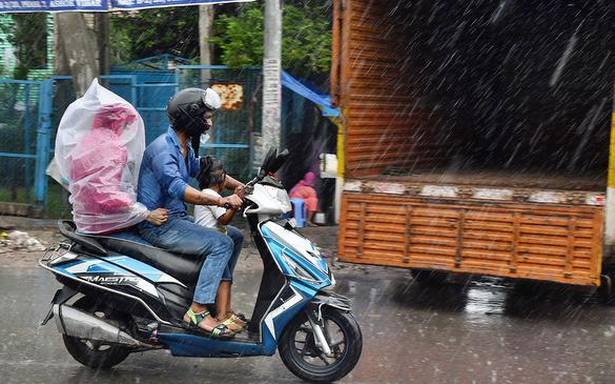The Capital had 16 rainy days in July, Yamuna still flowing above ‘warning mark’
Several parts of the city received scattered showers on Monday with the maximum temperature settling at 32.7 degrees Celsius, which is two degrees below normal. The minimum temperature was 26.1 degrees Celsius, one degree below normal.
While Safdarjung, the official weather station of the Capital, received only traces of rain between 8.30 a.m. and 5.30 p.m., the weather station at Palam recorded 18.1 mm of rainfall in the same period.
Other stations like Ridge and Ayanagar recorded 4.4 mm of rainfall, while Pusa reported no rainfall.
The India Meteorological Department (IMD) has forecast generally cloudy sky with light rain/thundershowers on August 3. The maximum and minimum temperatures are likely to hover around 33 and 25 degrees Celsius respectively. Cloudy skies are likely to remain till August 8 with light to moderate rain forecast.
The IMD has predicted that rainfall during the second half (August to September) of the southwest monsoon is likely to be normal (95% to 105% of Long Period Average). It added that monthly rainfall for August is most likely to be normal (94% to 106 % of Long Period Average) also. The forecast is for the country as a whole, added the IMD.
In July, the Capital had 16 rainy days despite the monsoon arriving over two weeks late — making it the most-delayed in 19 years. Of these 16 rainy days, the Capital received heavy rainfall on July 18-19 (69.6 mm), July 26-27 (100 mm) and July 29-30 (72 mm). IMD data show Delhi has received 582.8 mm of rainfall so far since June 1, when the monsoon season starts — nearly double the normal of 295.6 mm.
Seven critical points
Earlier in the day, the Delhi Public Works Department said it has identified seven critical waterlogging points in the city, including the Minto Road underpass, and is taking up several projects such as construction of drains and installation of pumps to avoid water accumulation during rain.
To prevent any untoward incident, boats and divers will be also be deployed in areas which face flooding, senior officials of the department said.
Meanwhile, the water level in the Yamuna, which was just below the danger mark at 205.30 metres on Sunday, receded slightly on Monday but was still above the warning mark of 204.5 metres. A flood alert is declared when the Yamuna crosses the ‘warning mark’.
Source: Read Full Article

